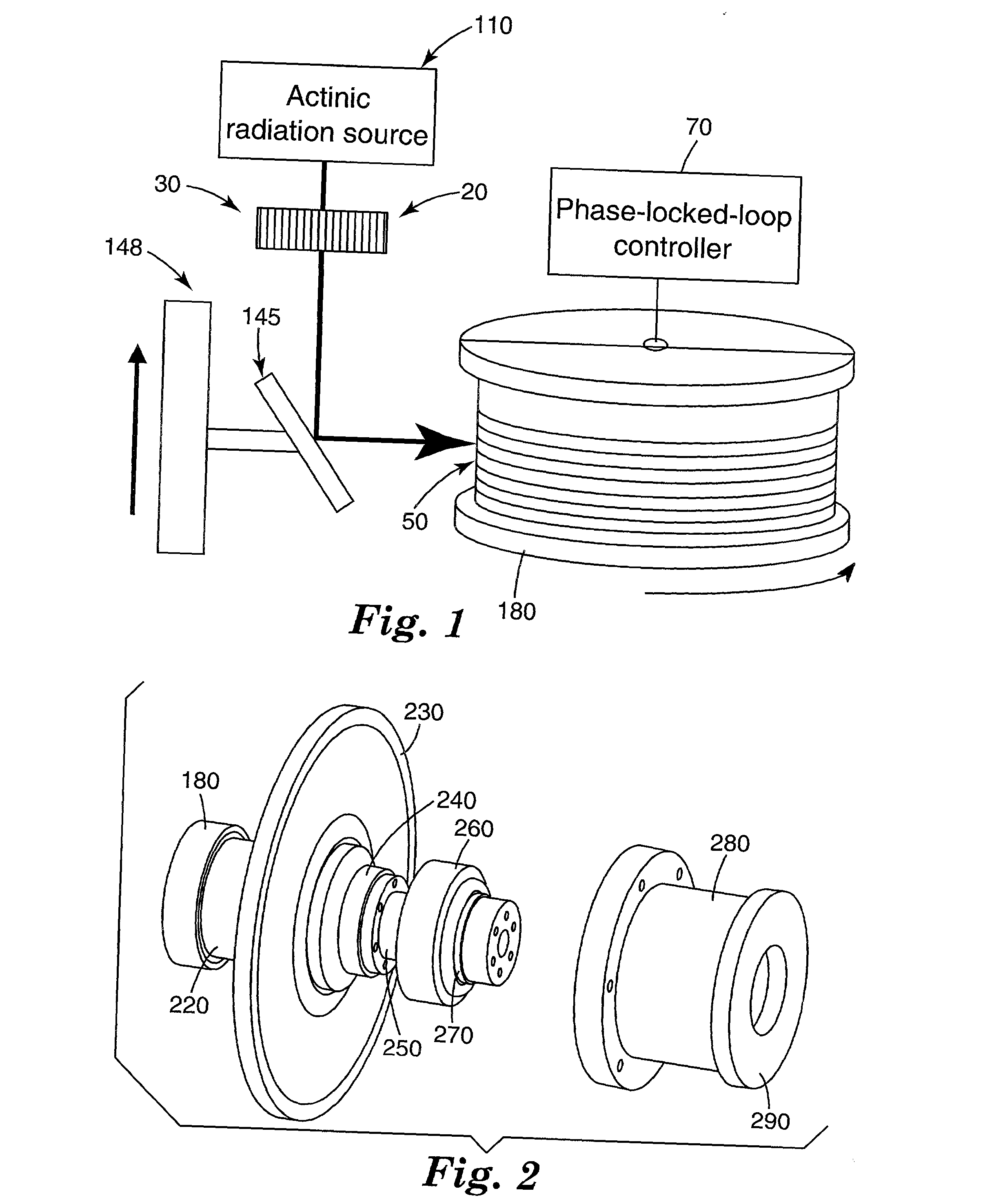Wide-bandwidth chirped fiber bragg gratings with low delay ripple amplitude
a fiber bragg grating and wide-bandwidth technology, applied in the field of chromatically dispersing lightwave signals, can solve the problems of introducing errors in detected data streams, limiting the reach of data rate for a single optical channel, and reducing the performance of the system, so as to achieve low delay ripple amplitude and not exhibit large fluctuations in system performance penalty across bandwidth
- Summary
- Abstract
- Description
- Claims
- Application Information
AI Technical Summary
Benefits of technology
Problems solved by technology
Method used
Image
Examples
example 1
[0043] This example illustrates the effect of increasing the rotational inertia, and hence the angular momentum, of the spindle used in the DCG fabrication system.
[0044] Two chirped FBGs were written, and their delay ripple amplitude was analyzed. The fabrication system of the first FBG comprised an induction motor with a smooth-walled rotor supported by an air bearing spindle. The spindle was controlled to rotate at a constant velocity with phase-locked-loop (PLL) electronics that followed a moir-effect rotary encoder. A spool with a helical groove to hold the optical fiber was also mounted to the air-bearing spindle. A spectrum of the delay ripple is shown in FIG. 3a. The delay ripple amplitude was hundreds of picoseconds. The rotaional inertia of the first system was .about.0.5 g m.sup.2.
[0045] The fabrication of the second gratings was the same as the first, but in this case the rotational inertia of the system was increased 40 times by adding a 40-cm-diameter flywheel to the sy...
example 2
[0047] A measurement of a DCG delay ripple with the modulation phase-shift method can vary depending on the modulation frequency, as shown in FIG. 4. If the measurement is made at 1 GHz, a ripple with {fraction (1 / 2)} the amplitude of that measured with a 100 MHz signal may be determined. It has been found that measuring the devices with a modulation frequency of <200 MHz gives consistent results. In some cases where the periodicity of the ripple is very fine, a frequency of <50 MHz is needed. For the measurements reported herein, a modulation frequency of 200 MHz was used as a standard.
example 3
[0048] This example further illustrates the improvements possible in delay ripple amplitude through the use of increasing the angular momentum of the spindle.
[0049] The fabrication system detailed in Example 1 was further improved by installing a heavier flywheel attached to the system of inertia .about.650 g cm.sup.2. The gratings were also written at faster rotational speeds to further increase the angular momentum of the fabrication system. The resulting FBGs exhibited delay ripple amplitudes of less than .+-.30 ps over bandwidths greater than 1 nm. The reflection, delay in reflection, and delay ripple of such a grating is shown in FIGS. 5 & 6.
PUM
 Login to View More
Login to View More Abstract
Description
Claims
Application Information
 Login to View More
Login to View More - R&D
- Intellectual Property
- Life Sciences
- Materials
- Tech Scout
- Unparalleled Data Quality
- Higher Quality Content
- 60% Fewer Hallucinations
Browse by: Latest US Patents, China's latest patents, Technical Efficacy Thesaurus, Application Domain, Technology Topic, Popular Technical Reports.
© 2025 PatSnap. All rights reserved.Legal|Privacy policy|Modern Slavery Act Transparency Statement|Sitemap|About US| Contact US: help@patsnap.com



